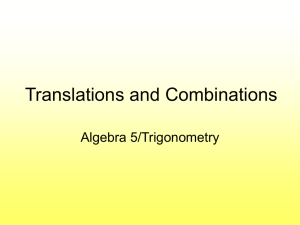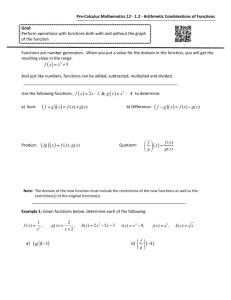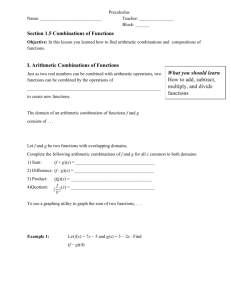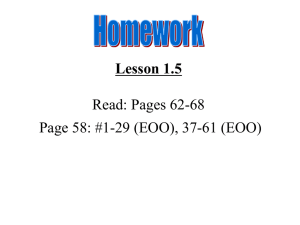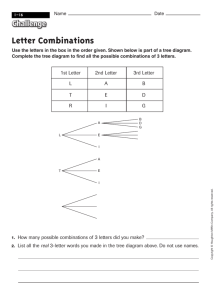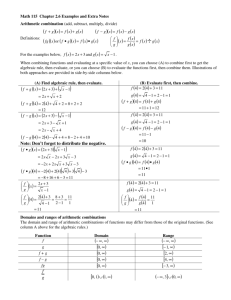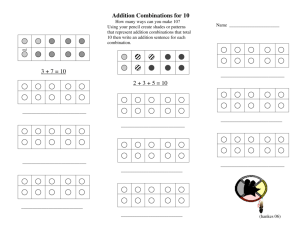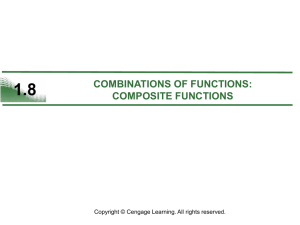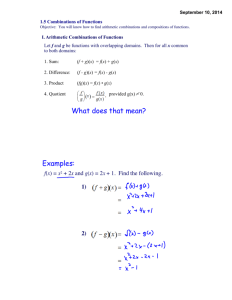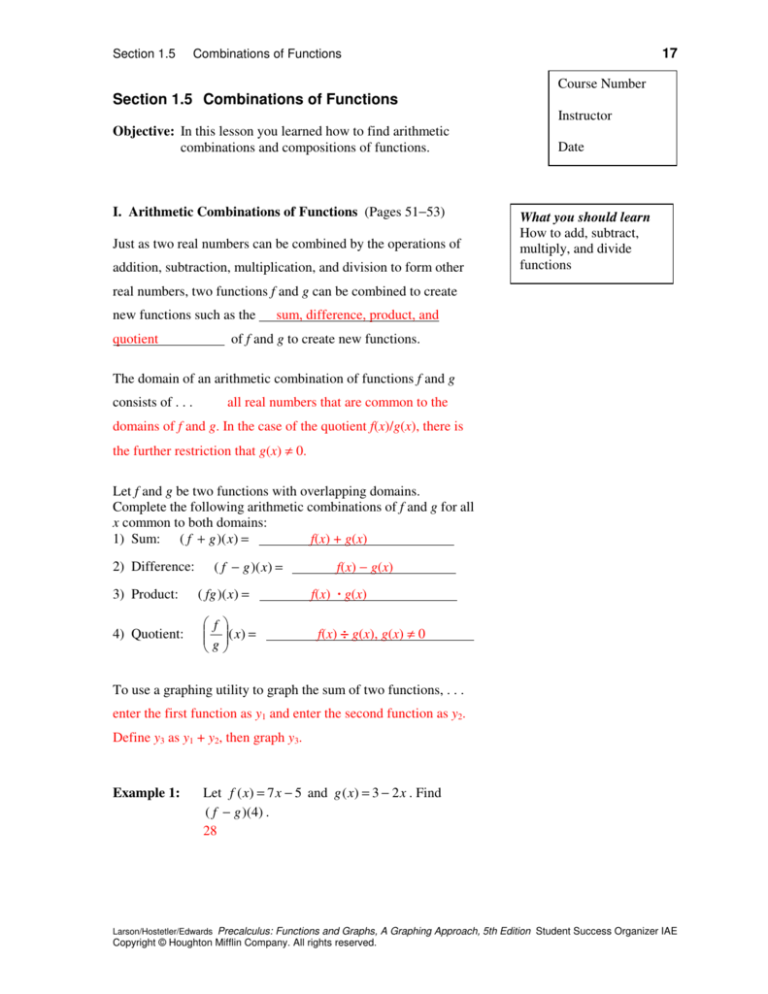
Section 1.5
17
Combinations of Functions
Course Number
Section 1.5 Combinations of Functions
Instructor
Objective: In this lesson you learned how to find arithmetic
combinations and compositions of functions.
I. Arithmetic Combinations of Functions (Pages 51−53)
Just as two real numbers can be combined by the operations of
addition, subtraction, multiplication, and division to form other
Date
What you should learn
How to add, subtract,
multiply, and divide
functions
real numbers, two functions f and g can be combined to create
new functions such as the
quotient
sum, difference, product, and
of f and g to create new functions.
The domain of an arithmetic combination of functions f and g
consists of . . .
all real numbers that are common to the
domains of f and g. In the case of the quotient f(x)/g(x), there is
the further restriction that g(x) ≠ 0.
Let f and g be two functions with overlapping domains.
Complete the following arithmetic combinations of f and g for all
x common to both domains:
1) Sum: ( f + g )( x) =
f(x) + g(x)
2) Difference:
3) Product:
4) Quotient:
( f − g )( x) =
( fg )( x) =
§f ·
¨¨ ¸¸(x) =
©g¹
f(x) − g(x)
f(x) · g(x)
f(x) ÷ g(x), g(x) ≠ 0
To use a graphing utility to graph the sum of two functions, . . .
enter the first function as y1 and enter the second function as y2.
Define y3 as y1 + y2, then graph y3.
Example 1:
Let f ( x) = 7 x − 5 and g ( x) = 3 − 2 x . Find
( f − g )(4) .
28
Larson/Hostetler/Edwards Precalculus: Functions and Graphs, A Graphing Approach, 5th Edition Student Success Organizer IAE
Copyright © Houghton Mifflin Company. All rights reserved.
18
Chapter 1
II. Compositions of Functions (Pages 53−56)
The composition of the function f with the function g is
( f D g )( x) =
f(g(x))
.
Functions and Their Graphs
What you should learn
How to find
compositions of one
function with another
function
For the composition of the function f with g, the domain of
f D g is . . .
the set of all x in the domain of g such that
g(x) is in the domain of f.
Example 2:
Let f ( x) = 3x + 4 and let g ( x) = 2 x 2 − 1 . Find
(a) ( f D g )( x) and (b) ( g D f )( x) .
(a) 6x2 + 1
(b) 18x2 + 48x + 31
III. Applications of Combinations of Functions (Page 57)
The function f ( x) = 0.06 x represents the sales tax owed on a
purchase with a price tag of x dollars and the function
g ( x) = 0.75 x represents the sale price of an item with a price tag
of x dollars during a 25% off sale. Using one of the combinations
of functions discussed in this section, write the function that
represents the sales tax owed on an item with a price tag of x
dollars during a 25% off sale.
What you should learn
How to use combinations
of functions to model and
solve real-life problems
(f g)(x) = (g f)(x) = 0.045x
Additional notes
Homework Assignment
Page(s)
Exercises
Larson/Hostetler/Edwards Precalculus: Functions and Graphs, A Graphing Approach, 5th Edition Student Success Organizer IAE
Copyright © Houghton Mifflin Company. All rights reserved.

